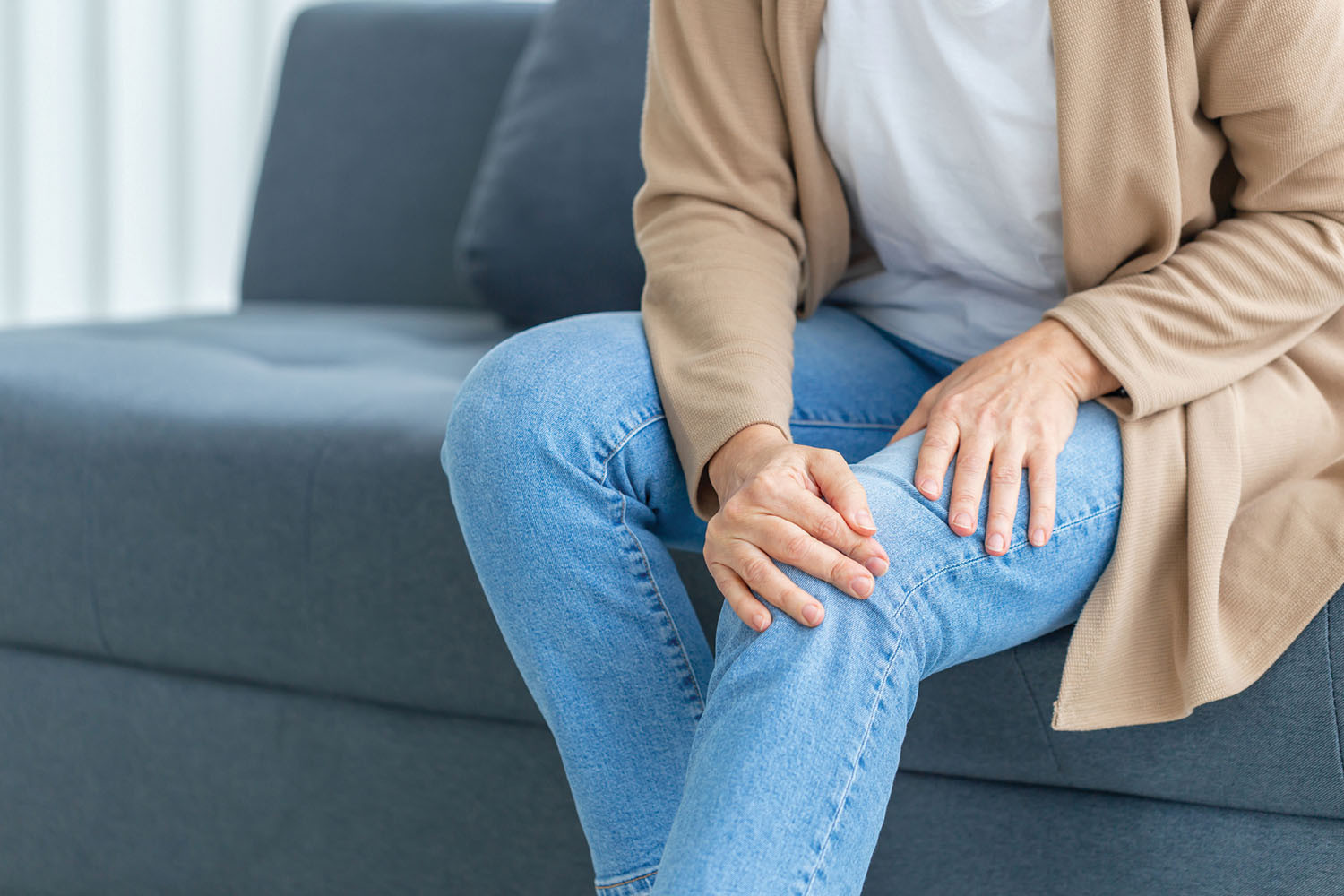
The notion that an impending storm can be predicted by the throbbing of a knee or the dull ache in an old shoulder injury is not merely folklore; it is a pervasive, deeply ingrained belief that cuts across cultures and generations of individuals living with chronic joint conditions, particularly osteoarthritis and rheumatoid arthritis. For many, this perceived connection between meteorological shifts and musculoskeletal discomfort is an undeniable, day-to-day reality, yet the scientific community has historically struggled to provide a consistently verifiable, unified theory that definitively proves causation. The literature is a dense, somewhat contradictory landscape of small-scale studies showing modest correlations, large epidemiological reviews finding no link, and biophysical theories attempting to bridge the gap between atmospheric physics and the human body’s intricate joint mechanics. Disentangling the physiological mechanism from the powerful psychological factors, such as the nocebo effect, is crucial to understanding why so many people feel that their joints are, in fact, remarkably accurate weather predictors. This exploration requires moving beyond superficial anecdotes to examine the complex, subtle ways in which the atmosphere interacts with an already sensitized joint structure.
Barometric Pressure: The Biophysical Prime Suspect in Joint Discomfort
Among all the atmospheric variables, the fluctuations in barometric pressure, or the weight of the air pressing down on the Earth’s surface, emerge as the most scientifically compelling candidate for influencing joint pain. The key mechanism postulated here involves the physical dynamics within the joint capsule itself. Joints, especially those affected by chronic inflammation or cartilage loss, are essentially closed systems containing synovial fluid. This fluid, which provides lubrication and shock absorption, exists at a pressure that is in equilibrium with the surrounding atmospheric pressure. When the weather changes and a low-pressure system moves in—often preceding rain or snow—the external pressure exerted on the body decreases.
“…the weight of the air pressing down on the Earth’s surface, emerge as the most scientifically compelling candidate for influencing joint pain.”
This drop in external compression can subtly, but materially, allow the tissues and fluid inside the joint capsule to expand. If the joint is already compromised—scar tissue from a past injury, worn cartilage, or chronic synovitis due to arthritis—this slight expansion can increase the pressure on the already irritated nerve endings (nociceptors) and soft tissues surrounding the joint. It is not necessarily the absolute pressure but the rate of change in barometric pressure that is hypothesized to be the most potent trigger. A rapid descent in pressure, indicative of an approaching weather front, may provoke a more noticeable internal expansion and, consequently, a more acute sensation of stiffness and pain compared to a gradual, incremental change. This mechanical explanation offers a tangible, non-subjective route through which weather can modulate pain in an already sensitized musculoskeletal structure.
The Synovial Fluid’s Response to Temperature Declines
Beyond barometric pressure, temperature, particularly a sudden and significant drop, has long been a factor cited by individuals reporting increased joint stiffness and pain. The underlying physiological theory centers on the properties of the synovial fluid within the joint cavity. This fluid, which is crucial for the smooth, frictionless movement of the bones, has a viscosity—a measure of its resistance to flow—that is inherently temperature-dependent. When the surrounding temperature declines, the synovial fluid is theorized to become thicker, or more ‘sludgy,’ reducing its lubricating efficiency.
“…the synovial fluid is theorized to become thicker, or more ‘sludgy,’ reducing its lubricating efficiency.”
This thickening effectively increases the internal friction within the joint, making movement inherently more difficult and potentially causing greater stiffness upon initiation of activity, a common complaint in individuals with arthritis during cold spells. Furthermore, colder temperatures trigger a systemic physiological response intended to conserve core body heat, primarily through peripheral vasoconstriction—the narrowing of blood vessels in the extremities. This reduced blood flow to the muscles and connective tissues surrounding the joint can lead to tissue hypoxia (reduced oxygen supply), increased muscle tension, and heightened sensitivity of nerve endings, all of which contribute to an amplified perception of pain and discomfort. The confluence of these local and systemic circulatory changes forms another plausible, albeit complex, physical pathway linking cold weather to joint symptoms.
Humidity and the Swelling of Periarticular Tissues
Humidity, often in combination with temperature, presents a more ambiguous connection to joint pain, with some studies suggesting high humidity exacerbates symptoms, while others propose the opposite. The theory supporting a negative link posits that high ambient humidity leads to increased water retention and subtle swelling in the periarticular tissues—the ligaments, tendons, and muscles that immediately surround the joint.
“…high ambient humidity leads to increased water retention and subtle swelling in the periarticular tissues…”
In a joint already burdened by inflammation or structural damage, this slight increase in soft tissue volume could further compress the joint capsule and the pain-sensitive structures within it, mirroring the effect hypothesized for low barometric pressure. However, the precise biophysical mechanism for how external water vapor pressure directly influences soft tissue fluid dynamics with enough magnitude to cause clinically relevant swelling remains less concretely established than the barometric pressure theory. Furthermore, the correlation often observed might be an indirect one, as high humidity frequently accompanies low barometric pressure and cooler temperatures, making it challenging for observational studies to isolate humidity as the sole, independent causative agent in the multivariate atmospheric cocktail.
The Conflicting Evidence from Large-Scale Epidemiological Studies
Despite the compelling biophysical and anecdotal theories, the extensive body of academic research on the topic is far from conclusive. Many large-scale, population-based epidemiological studies—which attempt to correlate millions of daily symptom reports with precise meteorological data—have often failed to find a robust, clinically significant link between weather variables and the onset or severity of joint pain. For instance, some massive data analyses have concluded that changes in air temperature, humidity, or rainfall are not associated with an increased risk of people seeking medical care for a new episode of joint or back pain. These null findings often lead researchers to emphasize the subjective nature of pain and the powerful role of cognitive biases in symptom reporting.
“…the extensive body of academic research on the topic is far from conclusive.”
Conversely, numerous smaller, focused studies involving specific patient cohorts, such as individuals with knee osteoarthritis, have found statistically significant, though often modest, associations with variables like humidity and barometric pressure. This divergence in results highlights the challenge of methodology: large-scale studies may dilute real effects due to patient heterogeneity and geographical variation in climate, while smaller studies, though better controlled, may lack generalizability. The scientific truth, therefore, is likely nuanced, suggesting that if a weather-pain link exists, it is probably small, highly individualized, and dependent on the specific type and severity of the underlying joint pathology.
The Psychological Amplifier: Expectation and the Nocebo Effect
A critical, non-physiological factor that must be considered is the powerful influence of the mind on the perception of pain, particularly the phenomenon known as the nocebo effect. This is the counterpart to the placebo effect, where a person’s negative expectations about a treatment or event can lead to the experience of negative symptoms. Given the widespread, culturally reinforced belief that bad weather causes joint pain, individuals with chronic discomfort are psychologically conditioned to expect a flare-up when the skies darken or the temperature drops.
“…a person’s negative expectations about a treatment or event can lead to the experience of negative symptoms.”
This heightened negative expectation can amplify the brain’s perception of existing, low-level physical discomfort, essentially turning up the volume on the pain signal. The phenomenon is further reinforced by recall bias: people are highly likely to remember the times their joint hurt and it was raining, but quickly forget the countless times it was raining and their joint felt fine, or the times their joint ached on a sunny day. This cognitive filtering mechanism creates a spurious, yet deeply felt, cause-and-effect relationship that makes the weather-pain connection feel irrefutable to the individual. Therefore, for many, the weather may not be causing the pain, but rather serving as a strong environmental cue that triggers a heightened, psychologically mediated response to existing discomfort.
Behavioral Shifts: The Indirect Pathway to Joint Stiffness
The weather’s influence on joint comfort may be primarily indirect, operating through its effect on daily behavior. When it is cold, rainy, or otherwise unpleasant outside, people with chronic pain are far more likely to reduce their levels of physical activity. They may skip their regular walk, opt out of water aerobics, or simply spend more time sedentary indoors. This voluntary reduction in movement, even for a short period, directly undermines the crucial benefits of exercise for joint health.
“…primarily indirect, operating through its effect on daily behavior.”
Regular, low-impact movement is essential for maintaining muscle strength, which supports the joints, and for ensuring the circulation of synovial fluid, which keeps the joint structures lubricated and nourished. When activity levels drop, muscles weaken, joints become stiff, and the overall pain threshold may decrease. Thus, the worsening joint symptoms experienced during a period of inclement weather may not be the direct result of the falling barometer or temperature, but a secondary consequence of the behavioral response to that weather—the choice to be less active. The weather, in this context, acts as an environmental catalyst for deconditioning.
The Individualized Nature of Symptom Variability
Ultimately, the most accurate understanding of the weather-joint pain relationship must acknowledge its high degree of individual variability. It is clear that while many people report the connection, not everyone with the same joint condition experiences the same symptoms in response to the same weather changes. Factors such as the specific disease (rheumatoid arthritis versus osteoarthritis), the joint affected (a knee replacement versus a finger joint), the duration of the condition, and an individual’s central pain processing mechanisms likely play a significant role in determining sensitivity to atmospheric changes. The physical changes brought on by weather—the barometric expansion, the thickening fluid, the vasoconstriction—may be too subtle to affect a healthy joint but become highly relevant when interacting with an already pathologically altered joint environment. This suggests that a one-size-fits-all meteorological explanation is insufficient, and a more personalized medical approach that considers the patient’s unique physiological and psychological profile is necessary to address their symptom concerns effectively.
